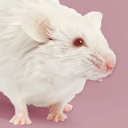| MGP_FVBNJ_T0045614.1 | - | 4894 | 580aa | MGP_FVBNJ_P0045614 | Gene/transcipt that contains an open reading frame (ORF).Protein coding | | - | A single transcript chosen for a gene which is the most conserved, most highly expressed, has the longest coding sequence and is represented in other key resources, such as NCBI and UniProt. This is defined in detail on http://www.ensembl.org/info/genome/genebuild/canonical.htmlEnsembl Canonical, |
| MGP_FVBNJ_T0045599.1 | - | 7506 | 555aa | MGP_FVBNJ_P0045599 | Gene/transcipt that contains an open reading frame (ORF).Protein coding | CCDS28477, CCDS28478, CCDS50012 | A0A0J9YUB2 Q3UUG6 Q52KG2
Q8BRB6 Q9R1A3 | - |
| MGP_FVBNJ_T0045600.1 | - | 7088 | 561aa | MGP_FVBNJ_P0045600 | Gene/transcipt that contains an open reading frame (ORF).Protein coding | | - | - |
| MGP_FVBNJ_T0045601.1 | - | 6075 | 555aa | MGP_FVBNJ_P0045601 | Gene/transcipt that contains an open reading frame (ORF).Protein coding | | - | - |
| MGP_FVBNJ_T0045605.1 | - | 4445 | 555aa | MGP_FVBNJ_P0045605 | Gene/transcipt that contains an open reading frame (ORF).Protein coding | | - | - |
| MGP_FVBNJ_T0045603.1 | - | 4236 | 561aa | MGP_FVBNJ_P0045603 | Gene/transcipt that contains an open reading frame (ORF).Protein coding | | - | - |
| MGP_FVBNJ_T0045609.1 | - | 4203 | 555aa | MGP_FVBNJ_P0045609 | Gene/transcipt that contains an open reading frame (ORF).Protein coding | | - | - |
| MGP_FVBNJ_T0045608.1 | - | 4158 | 555aa | MGP_FVBNJ_P0045608 | Gene/transcipt that contains an open reading frame (ORF).Protein coding | | - | - |
| MGP_FVBNJ_T0045607.1 | - | 4114 | 561aa | MGP_FVBNJ_P0045607 | Gene/transcipt that contains an open reading frame (ORF).Protein coding | | - | - |
| MGP_FVBNJ_T0045606.1 | - | 4069 | 555aa | MGP_FVBNJ_P0045606 | Gene/transcipt that contains an open reading frame (ORF).Protein coding | | - | - |
| MGP_FVBNJ_T0045602.1 | - | 3934 | 555aa | MGP_FVBNJ_P0045602 | Gene/transcipt that contains an open reading frame (ORF).Protein coding | | - | - |
| MGP_FVBNJ_T0045604.1 | - | 3659 | 561aa | MGP_FVBNJ_P0045604 | Gene/transcipt that contains an open reading frame (ORF).Protein coding | | - | - |
| MGP_FVBNJ_T0045612.1 | - | 893 | 182aa | MGP_FVBNJ_P0045612 | Gene/transcipt that contains an open reading frame (ORF).Protein coding | | - | - |
| MGP_FVBNJ_T0045610.1 | - | 3951 | 325aa | MGP_FVBNJ_P0045610 | | | - | - |
| MGP_FVBNJ_T0045613.1 | - | 437 | No protein | - | Gene/transcript that doesn't contain an open reading frame (ORF).Processed transcript | | - | - |
| MGP_FVBNJ_T0045611.1 | - | 370 | No protein | - | Gene/transcript that doesn't contain an open reading frame (ORF).Processed transcript | | - | - |

